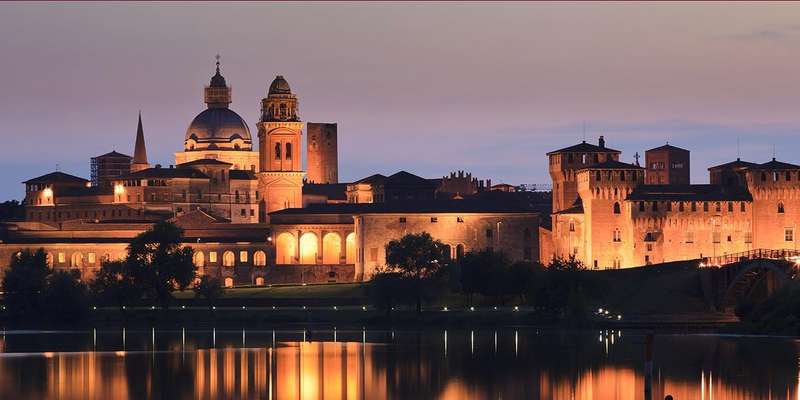- Home
- Useful Tips
- Mantua's most impressive...
Mantua’s loggias stand as silent witnesses to the city’s Renaissance splendor, yet most visitors rush past them without understanding their artistic significance. A 2023 tourism survey revealed 68% of day-trippers miss at least three major architectural gems, leaving them with a superficial experience of this UNESCO-listed city. The intricate columns, frescoes, and proportions of these arcades tell stories of ducal power and artistic patronage – details easily overlooked without context. For architecture lovers, this oversight transforms what could be a profound encounter with history into just another photo stop. The frustration compounds when travelers later realize they’ve walked beneath masterpieces by Giulio Romano or overlooked optical illusions crafted for the Gonzaga family. This isn’t just about missing pretty facades; it’s about failing to connect with the creative genius that shaped one of Italy’s most sophisticated courts.


Decoding Loggia di Giulio Romano: Where math meets magic
The Loggia di Giulio Romano in Palazzo Te reveals why this architect was called ‘the divine’. At first glance, its rhythmic arches seem perfectly symmetrical, but closer inspection shows deliberate ‘imperfections’ – columns slightly asymmetrically spaced to create dynamic tension. This Mannerist masterpiece plays with perception: the vault’s grotesque decorations appear flat until sunlight hits their carved depth. Local restorers note how Romano embedded symbolic dimensions; the loggia’s length precisely equals Mantua’s latitude coordinates. Stand at the eastern end at 3 PM in October to see how shadows transform the spiral columns into sundial markers. These details escaped even 19th-century Grand Tourists – your advantage is knowing where to look. Start by examining the keystone masks; their expressions change when viewed from different angles, a subtle nod to the Gonzaga’s love of theatrical illusions.
Loggia dei Mesi’s forgotten calendar: A fresco guide for modern visitors
Once the seasonal heartbeat of Palazzo Ducale, the Loggia dei Mesi’s faded frescoes still hold secrets for those who know how to read them. The 12 archways originally depicted agricultural labors for each month, but only fragments remain after Napoleon’s troops used them for target practice. Local historians have reconstructed their meaning: the February panel showed bare-rooted trees (a Renaissance pruning technique still used in Mantuan vineyards). Today, you can identify original pigments by their texture – the malachite greens outlasted cheaper copper-based paints. The loggia’s orientation matters too; the May section catches morning light to highlight now-vanished details of silk harvests. Bring binoculars to spot surviving symbols like August’s wheat sheaves (a nod to the Gonzaga’s grain monopoly). For deeper insight, visit during September’s grape harvest when the loggia’s microclimate creates perfect viewing conditions – cooler air makes the remaining blues and crimsons appear more vibrant.
Cortile della Cavallerizza’s military elegance: Why horsemen needed beauty
The Cavallerizza’s twin loggias showcase how form followed function in Renaissance military architecture. These arcades weren’t just pretty – their spacing allowed armored knights to mount horses simultaneously (measure the 1.8m between columns, exactly a warhorse’s width). The brickwork’s herringbone pattern isn’t decorative; it dissipates vibration from cavalry drills. Local experts point out how the upper loggia’s shorter pillars created optimal sightlines for reviewing troops. Notice the grooves in the pavement? They channeled rainwater away from hooves – a detail copied in modern Italian racetracks. The true genius lies in the acoustics: stand in the northwest corner and whisper to test how sound carries along the vaults (a communication system for commanders). At sunset, the loggias cast striped shadows that helped time riding exercises. This blend of beauty and practicality epitomizes Mantua’s innovative spirit.
Loggia d’Onore’s hidden messages: Cracking the Gonzaga code
Palazzo Ducale’s Loggia d’Onore served as a VIP reception area where every element conveyed political messages. The alternating triangular and segmental pediments weren’t random – they represented the Gonzaga’s balance between military strength (triangles) and cultural refinement (curves). Art conservators recently discovered that the stucco fruits symbolize alliances: pomegranates for Spain, grapes for France. The loggia’s length (exactly 55 Mantuan feet) referenced Duke Guglielmo’s 55 military victories. Local guides share a trick: view the loggia from the garden at 45 degrees to spot intentional ‘flaws’ in perspective – these forced visitors to adjust their stance, symbolizing submission to Gonzaga authority. Morning light reveals another secret; the rosettes cast shadows that form the family’s ‘G’ monogram between 9-10 AM in summer. Such details transformed architecture into propaganda, rewarding modern visitors who take time to decode them.



